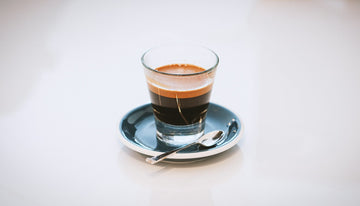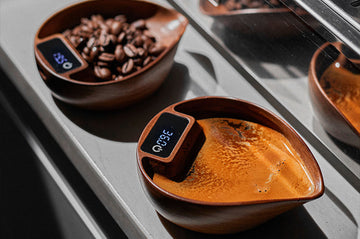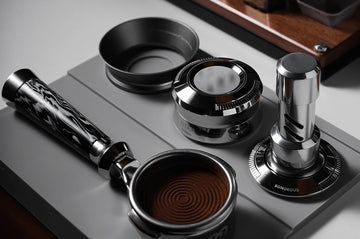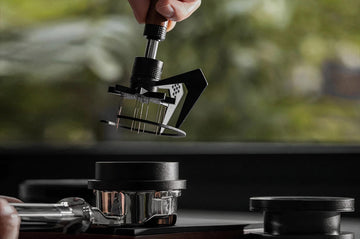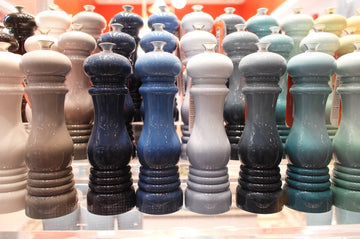What is the difference between regular coffee and Espresso? Some of the most popular questions might feel distressing to ask. If you are a coffee novice, you are probably finding distinction between them. Do not be embarrassing. There are many coffee categories you may not know, so you should delve in. To get you kicked off, here is a rapid guide on what really is the difference between them.
Origin of the Espresso
As with several coffee recipes, the Espresso was invented in Italy (about 100 years ago). The father of the Espresso is Luigi Bezzera and he comes from Milan. He uses a steam-pressure method to brew coffee, so the coffee has a strong flavor and aroma.
Furthermore, the brewing process is faster than other brewing drinks. The name “Café Espresso” means “pressed the coffee out”, citing to the water being pushed through the finely ground coffee at a high pressure. By the 1940s, the Espresso process had been accurately fine-tuned, making the coffee widespread and used across the world.
What are the differences between Espresso and regular coffee?
What strictly is the difference between Espresso and regular coffee? For some, a small cup of Espresso is the only real coffee while others think that it is a bitter waste of high-quality beans. Whichever you like, it is always fabulous to leave your comfort zone and try something new.
Brewing method
When talking about the difference between Espresso and regular coffee, the brewing method is what truly sets it apart. Regular coffee brewing processes take much time as they focus on the slow filtering of hot water through the coffee grounds. In other words, the duration determines the brewing method between Espresso and regular brewing drinks.
Espresso makers usually pressurize and shoot the liquid near-boiling water through finely ground coffee grounds and coffee beans packed into cakes. The process provides you a full aromatic and caffeine-packed cup of coffee in thirty seconds only.
In spite of differences in pressure between brewing methods for Espresso and regular ones, they still have similarity – brewing temperature. The quintessential brewing temperature for Espresso and other brewed drinks are from 195 to 205 degrees Fahrenheit.
Taste
Does Espresso taste different from other coffees? Yes, it does. A cup of Espresso is likely to have bolder flavors than a normal mug. This is because the drink is not made with a filter, so the flavor-filled oils are not lost. Regular coffee, on the other hand, is less strong and intense.
Pressure
The lever of an Espresso machine is the magic for making the drink. It creates true pressure to brew the drink faster. Moreover, it supports the crema and coffee oils spread better in the texture. The pressure is the cornerstone of brewing the final Espresso shot.
Filtered coffee depends on gravity to monitor the water through the coffee ground in order to make your shot. If you are using a Moka pot or a French Press, for instance, the real pressure utilized on the water and coffee is not a matter when you measure in atmospheric bars.
Plethora of Espresso machines have 9 bars, which is approximately equivalent to 130 pounds per square inch (PSI). To put that figure in a particular way, you possibly need to dive roughly 300 feet deep in the ocean to reach optimal Espresso pressure. It is a huge ton of pressure, so Espresso brewing time is extremely rapid and robust.
Serving size
Another different point between Espresso and regular ones might show up in the serving size. The average size of a cup of coffee tends to be 8 ounces; however, a classical Espresso shot is only 1 ounce. This is because Espresso has a thick and concentrated layer in consistency then other brewed drinks. Such a deep taste, less is obviously more.
Caffeine content
Espresso is usually speculated to include more caffeine intakes than regular coffee. In fact, it relies on how much you have on Java. Well, an average cup of regular coffee tends to have more caffeine than an Espresso shot. Generally speaking, an 8.oz. cup of coffee contains between 85 and 185 mg of caffeine. A cup of an ounce has from 40 to 75 mg.
It is correct that Espresso provides a higher concentration of caffeine per ounce, which is where the confusion likely occurs. However, you still consume less caffeine when drinking a shot of Espresso and one cup of coffee. The intake ought to change if you are an Espresso lover and have more than the average shots per day (roughly 5).
Strength
A prodigious Espresso cup will certainly be more robust and flavorful. It is usually made with much less water with indeed high pressure. Thus, the final consequence is highly concentrated coffee. Will the Espresso contain more caffeine? It will rely on the serving size.
In case you have to compare Espresso shots and regular brewing drinks, here is the answer. Espresso will have much higher caffeine content with 64 milligrams while regular coffee contains 12 milligrams only.
However, that is not how you drink the coffee. The story behind is how you pour a full cup. The average cup of coffee often has about 100mg of caffeine, compared to 64mg in the Espresso. In other words, an Espresso shot has less caffeine.
In a nutshell, Espresso ought to contain much more caffeine per ounce. For those who would like to obtain a fast energy in the middle of the day or wake up in the early morning, they are not going to imagine the power of an Espresso java. If you want to consume more caffeine content than they would get in a cup of coffee, a double Joe of Espresso will be a secret.
Equipment
When it comes to equipment, you do not have to buy expensive ones to make a coffee cup. Coffee makers have developed quickly in prevalence and are simple to use. Nevertheless, you really need to purchase an expensive device if you would like to enjoy an authentic and dedicated Espresso machine.
If you are a junkie of Espresso, then you could take into account a new machine. The price point ranges about 100 USD for a good Espresso maker. In case you want to enjoy all of the coffee types on the table, you will pick a multi-purpose unit. This is a decent alternative for many of us to spend the necessary time to learn how to use the apparatus in the right way.
Preparation
In the Espresso preparation, grinding will be finer than the regular coffee. The short processing time of 25 or 35 seconds supports the extraction process. Only in this way, it requires the brewing pressure (between 6 and 9) which will be built up.
For a single shot of Espresso, 7 to 9 grams of coffee powder are often put into a sieve carrier, for instance. Relying on how much coffee ground is applied, 20 to 50 milliners of Espresso are filled. The water temperature for Espresso, moreover, is from 90 to 96 degrees Celsius. It varies on the kind of coffee and personal preferences.
Grind size
When you have gotten the coffee beans, what will you do next? The difference between Espresso and other brewed drinks is what you do with these beans. For brewed coffee, you will use a coarser grind. For Espresso, the coffee ground will be finer. Nonetheless, do not grind your beans too finely. Overly ground beans will make bitter Espresso.
Roasting
When coffee beans are collected, they are still pale green and we should not use them to brew. This is because they need to be roasted to indicate the best qualities. People roast coffee beans until dark as Espresso requires high pressure under the shot. A dark roast inherits a full body with low acidity and this consistency is well-suited for enjoying with milk.
Light roasts are typically well matched for other regular coffee, which ought to provide the brighter and fruitier flavors of the coffee shot. However, coffee beans boil down to personal preferences. Well, it would be a good idea to experience some different beans.
Could you use Espresso coffee beans for regular coffee?
Yes, you can. However, you should pay attention to the roasting process.
Is Espresso stronger than regular coffee?
Yes, it is. Espresso often has an intense flavor.
Final words
The main difference is in how you make the drinks. Espresso is an Italian-style coffee brewed with high pressure and quick speed. You need to use the machine and fine grind size. In comparison, other ordinary coffee types are made by slowly filtering water through the grounds.



